Beverly Gray's Blog: Beverly in Movieland, page 22
September 12, 2023
City of Nets: Hollywood Faces the 1940s
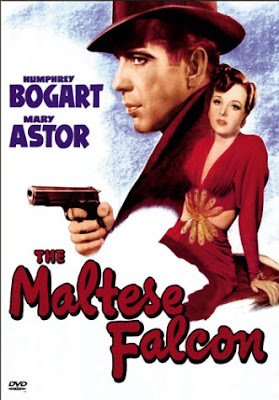
I didn’t know much about OttoFriedrich when a fellow member of the Biographers International Organization suggestedI read Friedrich’s classic history of Hollywood. Called City of Nets (witha nod to Bertolt Brecht’s crass, venal City of Mahagonny), it focuses on the1940s, a turbulent era in moviedom. Devoting each chapter to a year in thatdecade, Friedrich takes the reader from a society at war to a society not quitesure on how it wants to celebrate and preserve the peace.
A journalist and historianinterested in the evolution of culture, Friedrich tackles Hollywood as a placethat fulfills the world’s dreams while also dangling celebrity and fortune infront of the lucky few who’ve figured out how to play the game. He spends manypages on Hollywood at war: the famous actors marching off to do battle (orgetting cushy commission to make propaganda films); the glamorous actresseshustling war bonds and serving up doughnuts at the Hollywood Canteen. Regardingthe post-war years, Friedrich chronicles in detail the rise of politicalhysteria leading up to the blacklisting of Hollywood writers with Communistsympathies, as carried out by studio heads fearful of governmental censure. Hisaccount looks closely at those on both sides, laying bare the inept strategiesused by the so-called Hollywood Ten when called before a Congressionalcommittee. Alas, their ill-considered testimony probably lost them keysupporters throughout the industry and the public sphere as well.
But I was most fascinated bythe evolution of Hollywood stars in this era. The book was recommended to meinitially after I wrote about early films (like Dead End) in whichHumphrey Bogart was typecast as a powerful bad guy, someone who lacked anyredeeming qualities whatsoever. The transformation came when fledgling directorJohn Huston was looking for a leading man to play Sam Spade, a tough butprincipled private eye, in the umpteenth screen adaptation of DashiellHammett’s The Maltese Falcon. The role had been turned down by virtuallyevery tough guy on the Warner Bros. payroll: George Raft, Paul Muni, Edward G.Robinson, John Garfield. But Bogart leaped at the chance to play his firststarring role. It made him an icon, and an actor whose stoic charisma the restof young Hollywood couldn’t help but admire. Suddenly a new sort of antiherowas born.
Friedrich presents equallyinteresting tales of two new Hollywood glamour girls. When Betty Perske, asleek eighteen-year-old model, was spotted by Howard Hawks on the cover of Harper’sBazaar, he thought she might be just the dame to cast opposite Bogart inTo Have and Have Not. She was shy and had a high-pitched voice, but shewas nothing if not eager to be educated. Under Hawks’ tutelage, she lowered hervoice and became Lauren Bacall. Because Hawks felt women were most excitingwhen they played hard to get, she unveiled an on-screen arrogance that becameher persona from then on. It didn’t hurt her career, of course, that she andBogart quickly fell deeply in love.
An even more dramatic metamorphosisturned Margarita Carmen Dolores Cansino into screen goddess Rita Hayworth. Ayoung New Yorker whose father had toured as a Spanish dancer, she turned out tobe infinitely malleable. Her dancing was her strong suit; the studio dyed her longbob of hair a flaming red, dubbed in someone else’s singing voice, and cast heras the naughty (or is she?) Gilda. Alas, she said years later, “Every man I’veknown has fallen in love with Gilda—and wakened with me.”
September 8, 2023
Derailing My Train of Thought

Why do so many movies takeplace on trains? Of course there are also a good many car movies and airplanemovies (think The High and the Mighty, also Flight), but Ibelieve passenger trains have a special place in the hearts of filmmakers. Likeairplanes, trains enclose an assorted group of people in a confined space, andpotentially expose them to danger. But trains are, far more than airplanes, in directcontact with the external environment. While a train is in motion,threats—human as well as environmental—can come in from outside. By the sametoken, you can leave a moving train through doors and windows; you can hide ina private compartment, or ride, inmoments of danger, on a train’s roof. And the platforms at train stationsintroduce a wide (and unscreened) mix of people, some of whom might show up forthe sole purpose of causing trouble.
Why am I thinking about this?Partly because a few days back I started to watch Bullet Train (2022),an action comedy toplined by Brad Pitt and a cast of kajillions, virtually allof them assassins pursuing assorted targets aboard a high-speed Japanese train.I didn’t last long—the ultra-chaotic nature of the film soon derailed me—but theexperience got me thinking about trains, both the peaceful long-distance kindthat whisked me from Tokyo to Kansai when I lived in Japan and all the trainsI’ve encountered on movie screens over the years.
And then I found myself on atreadmill at my gym, watching what turned out to be the action climax of the1996 spy film, Mission: Impossible. Yup, it starts off on a passengertrain (in Europe, this time). In pursuitof turncoat spy Jim Phelps, young Ethan Hunt(Tom Cruise) slithers to the roof of a fast-moving train car, where ahelicopter is dangling a cable meant to airlift Phelps (Jon Voigt) to safety. Woeto the chopper pilot, who finds himself (thanks to Hunt’s quick thinking) trappedinside the Chunnel, his whirlybird firmly attached to the train’s roof. Now that’s entertainment!
Not all movie trains aresleek and modern. One of the treasures of the silent period is the 1926 flick, TheGeneral, in which Buster Keaton (who wrote and directed as well as starred)plays a Civil War-era railroad engineer. Thrills blend with comedy as he rescueshis beloved locomotive from invading Union troops, then strategically uses thetrain to ensure a major Confederate victory. A period luxury train is part ofthe fun in both screen versions of Murder on the Orient Express, inwhich a murder in a train sleeping compartment leads to suspicions falling onevery one of the passengers in the car.
At the other end of thespectrum is Snowpiercer (2013), a post-apocalyptic thriller based on aKorean graphic novel. It posits that, as a result of climate change, our planetis uninhabitable. That’s why what’s left of humanity lives permanently on ahuge, globe-circling supertrain that crosses and recrosses what remains of ourfamiliar landscape.
But trains are involved in small,personal stories as well. They’re great places to run up against mysteriousstrangers who can change your life. On atrain you might encounter a spy (Hitchcock’s North by Northwest) or someonewho challenges you to help plan a perfect murder (Hitchcock’s Strangers on aTrain). You might discover yourself stuck amid the dangerous silliness ofthe Ale and Quail Society (Preston Sturges’ The Palm Beach Story). Or you might meet, as in Brief Encounter’strain station, the love of your life.

September 5, 2023
Astaire and Rogers Face the Music—and Dance
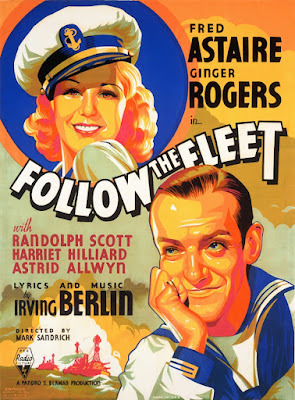
When I was learning toappreciate classic musicals, I noticed that revival houses liked to pair theAstaire/Rogers Top Hat (1935, music by Irving Berlin) with their 1936offering, Swing Time (music by Jerome Kern). Both, of course, are headyblends of screwball antics, mistaken identities, tap dancing, crooning, andglides around the ballroom floor. These films don’t make much sense, butAstaire’s suave grace. Rogers’ spunk, and the participation of a host of amusingsidekicks ensure that they’re magical and fun. Of the 10 Astaire/Rogers films TopHat was chronologically #5, and proved to be their all-time majorblockbuster. Swing Time, slightly less of a hit but still highly popular,was #7.
In between these two majoroutings by one of Hollywood’s favorite duos, Fred Astaire and Ginger Rogerslaunched as their sixth pairing a little vessel called Follow the Fleet (1936,again with an Irving Berlin score). Itcertainly has its moments—and some wild and crazy dancing—but an ultra-sappyromantic plot and some additional missteps prevent this from being one of theduo’s top outings.
Because Astaire, in his earlyfilms, was typically kitted out in white tie and tails, Follow the Fleet triesto modify his patrician image by dressing him in a sailor suit. In other waystoo, the script aims to suggest that he’s simply an average Joe (in many of theearly scenes we have to watch him enthusiastically chewing gum). The nautical segmentsgive us some great song-and-dance numbers, like Berlin’s rollicking opener, “WeSaw the Sea.” I can’t resist providingsome sample lyrics to showcase the song’s deadpan wit, which Astaire sells withgusto:
We joined the navy to see the world
And what did we see? We saw the sea
We saw the Pacific and the Atlantic
But the Atlantic isn't romantic
And the Pacific isn't what it's cracked up to be . . . .
We never get seasicksailing the ocean
We don't object to feeling the motion
We're never seasick but we are awful sick of sea
It took me a while to realizewhat’s unusual about this gang of gobs. In such nautical musicals as On theTown and Anchors Aweigh, the men may be enjoying shore leave, butthey’re members of the U.S. Navy, and they’ll soon be risking their lives insome of the bloodier battles of World War II. Follow the Fleet, bycontrast, focuses on the peacetime navy, in which sailors seem to have nothingbetter to do than court pretty girls and evade the shore patrol while stagingan impromptu musical show to help a damsel in distress.
That damsel is not Ginger buther sister Connie (played by a pre-Ozzie-Nelson Harriet Hilliard). She’s amousy music teacher who—when glammed up by a helpful (and very blonde!) LucilleBall—catches the eye of Fred’s buddy, portrayed by a hunky but not too ethicalRandolph Scott. Soon she’s deeply in love and worried about a potential loss ofself control, which leads her to sing a really nauseating song called “Get theebehind me, Satan.” Clearly, Irving Berlin had his duds as well as his triumphs.
Somehow everything ends up hingingon the success of that shipboard show, in which (of course) Astaire and Rogerstriumph. It’s an unusually somber but gorgeously staged routine in which Ginger’scharacter contemplates suicide but is persuaded by Fred to “Face the Music andDance.” Their achievement is such that the out-of-work Ginger earns her debuton Broadway and gets Fred in the bargain too.
They don’t make ‘em like thatanymore.
September 1, 2023
Illuminated by Friday Night Lights
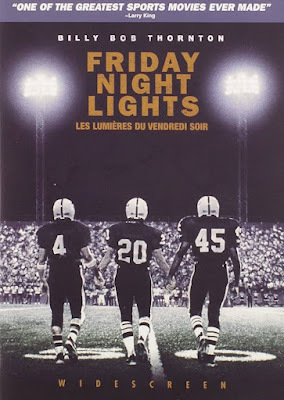
When I started watching the2004 high school football film, Friday Night Lights, I had no idea whowon the big game. Nor was I aware that the film is based on a much-acclaimednon-fiction book by journalist H.G. Bissinger. In his Friday Night Lights: A Town, a Team, and a Dream, Bissinger closelyobserves a scruffy west Texas oil town that pours money and love into thePermian High School Panthers as a way to bring a community together.
Bissinger’s 1990 book washardly without controversy. While spending a year in Odessa, Texas, heinvestigated far more than a local football team. His in-depth look at a townwhere the football coach out-earned the high school principal revealed rulesviolations, a cavalier approach to classroom behavior, and off-the-fieldscandals. There was, in addition, a quiet streak of black-white racism that ranthrough the nominally integrated school community.
What I saw in the filmversion did not focus on race. (I was most aware of racial issues in thelead-up to the climactic game, in which the Panthers take on Dallas Carter HighSchool, an all-Black team of behemoths who not only dwarf our heroes but do notshy away from some late hits and other dirty tricks.) We are naturally drawn toroot for the Panthers, depicted as a nice group of kids—both Black andwhite—who play hard but face their fair share of bad breaks.
The worst break of all comesat the start of the season, when running-back James “Boobie” Miles suffers acareer-ending knee injury. The cocky, gregarious Boobie (Derek Luke) instantlygoes from being a star heavily recruited by major college teams to a guy on thesidelines. It’s a heartfelt performance by Luke, who has also played the titlerole in Denzel Washington’s AntwoneFisher. Another key team member is hard-working quarterback Mike Winchell(Lucas Black), a good guy in permanent thrall to his ailing mother. (Black hassince gone on to be featured in the Fast and the Furious franchise.) Perhapsthe toughest situation of all is that of Don Billingsley (Garrett Hedlund),whose on-field jitters are made far worse by his abusive father (country musicstar Tim McGraw in a credibly raw performance), himself once a standout on achampionship team.
Though many of these youngsupporting players (including Hedlund) have gone on to rise within theindustry, the film’s clear star is Oscar-nominated actor Billy Bob Thornton,who plays Gary Grimes, the team’s head coach. By turns feisty and gentle, Grimesunderstands these boys, their aspirations, and their worries. We also catch aglimpse of his strong, supportive spouse, played by Connie Britton. She wouldrepeat her role in a TV series based on the film, one that ran for fiveseasons. Never a ratings juggernaut, the series was much admired by critics. Itseems a perfect fit for television, since high school athletics imply arevolving cast of characters arriving each fall to be led by coach Grimes andhis staff to triumph or to tragedy.
At its start, the series was written anddirected by Peter Berg, the power behind the original film. I don’t know Berg’scareer in depth (mostly he seems to be a television guy), but his work on the FridayNight Live film has made me a fan. The screenplay doesn’t seem written somuch as it seems lived by its characters. The multiple storylines cometogether naturally, avoiding any confusion. And the on-field action has a “youare there” quality that conveys the brutal excitement of football. Yay, team!
August 29, 2023
Paul Newman Holds His Own: “Fort Apache, The Bronx”
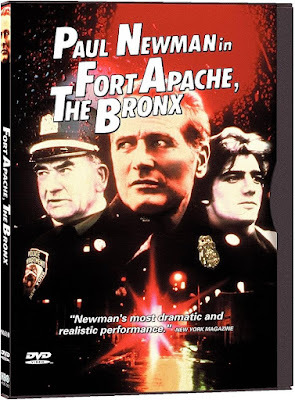
Paul Newman was well known tomost movie fans (as well as to Hollywood casting directors) as the epitome ofthe tough, sexy American male, sometimes an iconoclast and a loner but alwaysthe most attractive guy in the room. Fellow macho-man Steve McQueen lumpedhimself with Newman when worrying that, in the wake of The Graduate,“ugly” guys like Dustin Hoffman might threaten the careers of classicallyhandsome types. The funny thing is that my first awareness of Paul Newman mademe categorize him as the wimp who doesn’t get the girl.
Newman made his Broadwaydebut in 1953, in a featured role in William Inge’s explosive play, Picnic. Setin a small midwestern burg, it’s about the local beauty who defies conventionwhen a handsome drifter comes to town on the eve of the annual picnic. Leftbehind in her passionate connection with the drifter is her longtime beau, agood guy but one who bears the limitations of his small-town upbringing. Newmanwould seem to be obvious casting as the hunk (that role went to Ralph Meeker),but instead he played the rejected boyfriend. Since I—living thousands of milesfrom New York City—was an inveterate reader of Broadway plays I never saw onstage, I jumped to the conclusion that Newman came off as a weakling.
Not hardly, as fans of suchlandmark films as The Hustler, Hud, Cool Hand Luke, and ButchCassidy would be quick to point out. Newman’s signature character is notalways smart in his behavior, but he’s crafty, highly physical, has a disarmingsense of humor, and (whatever his weaknesses) you can’t help but love him.These movies were all made in the Sixties, but in 1981 a gracefully ageingNewman (age 56) brought some of those same qualities to a nice little copthriller called Fort Apache, the Bronx.
Fort Apache, The Bronx appropriates the name of a 1948 John Ford western todescribe a much-beleaguered police precinct house in New York City. (A formerBronx cop had used that same name in his published memoir, leading to a lawsuitthat plagued the production.) Newman plays Murphy, a veteran cop with anex-wife and a drinking problem. His partner, played by Ken Wahl, is somethingof a newbie, but the two are devoted to one another. They have far lessaffection for their fellow law officers, some of whom are bottom-of-the-barreldiscards from other precincts. The new precinct captain, played by EdwardAsner, wants to run things by the book, but fails to understand the challengesof a neighborhood in which drugs, guns, and prostitution rackets areeverywhere. (Really, he should have stuck to journalism!) Not only does hetrigger a riot but his new policies lead to a heinous crime by one of the boysin blue.
The action of Fort Apache,The Bronx, kicks off with the apparently senseless murder of two rookiecops sitting in a squad car. The police never solve the crime, though we in theaudience know from the start who’s behind it and why the culprit will never bebrought to justice. This is just one of the indications that the problems spelledout in this film will not be solved anytime soon. It’s a grim message, butNewman’s character (despite the bitterness that leads him to consider an abruptretirement) is a cop through and through. I’m grateful to director DanielPetrie and screenwriter Heywood Gould for leaving us in the coda with a glimpseof Newman and his partner joyously doing what they do best.
August 23, 2023
“Take Off Your Clothes”: Filmmakers Grapple With “The Unbearable Lightness of Being”
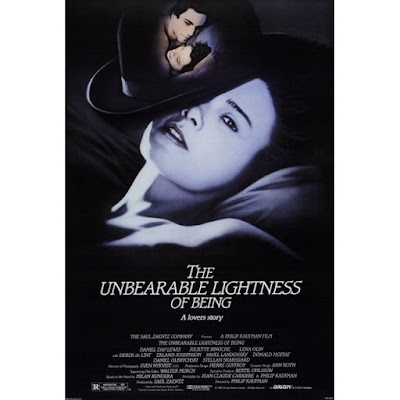
The Unbearable Lightnessof Being is the masterwork of Czechnovelist Mila Kundera, whom we lost this past July. Published in 1984, it is acomplex philosophical blending of a love story and a chronicle of the invasionof Czechoslovakia by Soviet troops in 1968. In 1988 the novel became anaward-winning film, featuring an international cast and crew. Kundera himselfat first took part in the filmmaking process, but later insisted that the movieadaptation bore no resemblance to his novel, and refused to permit furtheradaptations of his oeuvre.
It was Czech expatriatefilmmaker Milos Forman who saw the possibilities of bringing Kundera’s work tothe screen. But with the Soviet Union then still in control of his homeland, Formandidn’t dare involve himself personally, for fear of causing harm to hisrelatives back home. That’s why he brought this project to producer Saul Zaentzand writer/director Philip Kaufman (The Right Stuff), working throughOrion Pictures. The cast was led by three European actors headed for stellarcareers. Daniel Day-Lewis, who’d had modest but showy roles in British filmslike My Beautiful Laundrette and A Room With a View (both 1985),was chosen to play Tomas, a renowned young surgeon. This character, committedto sexual adventures with a wide range of available young women, stands at thevery center of the drama. The two most important females in his life, theidealistic Tereza and the boldly cynical Sabina, were played by a very youngJuliette Binoche (then age 23) and a sleek, sexy Lena Olin. For both of them,the cavalier European approach to on-screen nudity is very much in evidence.
Some parts of the film(notably Tomas’s sly advance to a sexy nurse in the opening moments) arenotably funny. But there’s no humor to be found when Russian tanks roll intothe nation’s capital to end the vaunted Prague Spring of 1968. This is thesection in which Kaufman’s filmmaking is at its most remarkable. We seeBinoche’s Tereza, a serious amateur photographer, snapping close-up photos ofthe violence in the streets of her city, then entrusting the precious rolls offilm to travelers leaving Czechoslovakia. This is a reflection of what reallyhappened: many hours of such you-are-there documentary footage—both stills andhome movies—ended up scattered throughout Europe and America, carried bytourists and expats. The filmmakers gathered up what they could find, then carefullyinterspersed it with scenes showing Kundera’s characters in the midst of theaction. The result (even though the film was shot on location in Lyon, France)is a close-to-accurate vision of what happened in 1968 Prague. (Sven Nykvist,Ingmar Bergman’s favorite cinematographer, was Oscar-nominated for his work, aswere the authors of the film’s screenplay.)
But The UnbearableLightness of Being is as much about love as it is about politics. For thefilm version, those in control decided it would be best to focus on the centralromantic story. This is the tender but somewhat unlikely marriage of the shyand self-conscious Tereza and the cheerfully philandering Tomas, a relationshipin which their much-loved pet dog plays an important role. Their desperatejaunts in and out of Prague dominate the later parts of the film ending with aretreat into the pristine countryside and a moment—how brief a moment!—of quietjoy. It’s hard to say that this three-hour movie hangs together, or that itcaptures in full the novel’s philosophical complexity, but still it’s a worthyintroduction to a world-class author’s most admired work.
August 21, 2023
“Jury Duty”: A TV Star is Born
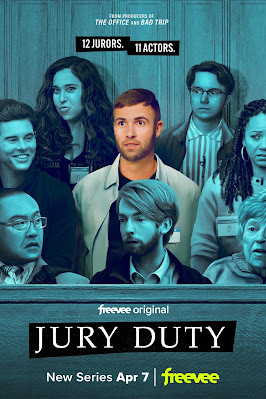
The prank show is as old astelevision. How well I remember Candid Camera, various versions of whichwere around from 1948 to 2014. This hidden-camera reality show delighted inputting the unsuspecting in awkward situations (like encountering a mailboxfrom which a human hand reaches out to take your mail). There was lots of innocentmerriment to be had in seeing others fooled by wacky oddities.
Then there’s the so-calledmockumentary. It’s realistically filmed, as though a camera crew just happensto be looking in on some everyday but slightly eccentric folk. Among movies, I’dcite 1984’s This is Spinal Tap, in which actor Rob Reiner—making hisdirectorial debut—appears on-screen as Martin Di Bergi, earnestly interviewingfour members of what is called “one of England’s loudest bands.” Among thedroll rockers in Spinal Tap is one played by Christopher Guest, who wenton to produce and direct his own series of mockumentaries. These have includedmy favorite, Waiting for Guffman, as well as the deathless Best inShow, an hilarious send-up of the snooty kennel-club world. The mockumentaryformat has been used on TV on such sitcoms as The Office, the U.S.version of which pretends to be filming a workplace documentary about theemployees punching their time-cards at Dunder Mifflin Paper Company.
All of this, I suppose, pavesthe way for an 8-part TV series produced by Amazon Studios and now nominatedfor three Emmy awards, including Outstanding Comedy Series. It too is amockumentary, with jurors and other courtroom personnel being interviewed byoff-camera journalist-types, supposedly for a film about what it’s like toserve on an American jury. Here’s the key difference from most mockumentaries:though the judge, the bailiff, and eleven jurors are all actors playing roles,the jury foreman has no idea that he’s at the center of an elaborate prank.Ronald Gladden, of San Diego, is a good-natured young man excited about servingon a jury for the very first time.
What he experiences is atrial that at first seems straight-forward: the well-heeled owner of a T-shirtmanufacturing business is suing a derelict employee who—drunk anddisorderly—befouled a huge stack of her product. But nothing goes as planned.The plaintiff is obnoxious; the defendant’s attorney is hopelessly inept; onejuror suffers a near-fatal fall; a second is having a major romantic crisis; athird keeps falling asleep in the courtroom; a fourth is a total space-cadetwho enters the jury room wearing his own bizarre invention--“chair-pants.” Toadd to the chaos, the jury’s alternate member is a semi-well-known actor, JamesMarsden, who can’t help reminding everyone of his celebrity at every turn. (“JamesMarsden” is played by James Marsden, best known for films like X-Men andHairspray. His obnoxious but somehow endearing lampoon of his own publicimage earned him an Emmy nomination.) Because of Marsden’s outrageous shenanigans to get out of serving, thejury ends up sequestered in a local motel, where many adventures await them,involving both sex and plumbing.
None of this would work if itwere not for Ronald Gladden. As the one person who’s not in on the joke, he’strying hard to be both a good juror and a friend to all. Yes, he deals withsome pretty unspeakable things, but it’s made clear at the end that everyone onthe cast and crew loves him. By the end of Episode 8, you will too. I suspectthis will not be his last time on the tube. And I know law students will be institches over this very funny show.
August 18, 2023
“American Graffiti”: Where Were YOU in ’62?
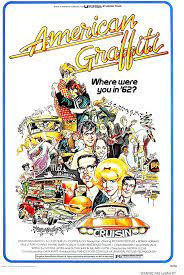
Want to feel old? Ron Howard,once cherished by American TV viewers as little Opie Taylor on The AndyGriffith Show, is now in his seventieth year. And AmericanGraffiti, the very last movie in which Howard was billed as “Ronny,” is nowcelebrating the fiftieth anniversary of its release. This meandering saga ofone post-graduation night in a California town effectively launched the filmmakingcareer of George Lucas. Lucas was then a recent graduate of the famous USC filmschool. His Hollywood career began in 1971 when he expanded his eerilyfuturistic student film into the big-budget THX 1138. After it failed tomeasure up at the box office, he turned to his own earlier life in the CentralValley town of Modesto, California. Thus was American Graffiti born. Itsyoung characters, who roam the streets of Modesto in their souped-up cars, allreflect aspects of Lucas’s own teen-age years: the hot-rodding; the shakyintellectual ambitions; the dorky phase; the urge to “get out of this turkeytown.”
When I was researching mybiography, Ron Howard: From Mayberry to the Moon . . . and Beyond, I learned how Ron (then 18years old and about to start USC film school himself) was surprised by GeorgeLucas’s approach to moviemaking. The movie, shot in Petaluma, California(standing in for Modesto) over the course of twenty-eight nights, cost a mere$775,000. Auditioning for a part, Howard was asked to improvise scenes withother actors. This was his first hint that George Lucas didn’t do things theHollywood way. Lucas shot take after take in what he called “documentarystyle,” hoping his actors would catch him by surprise, and then cobbled hisfilm together in the editing room. The scene in which Howard and CindyWilliams, as Steve and his girlfriend Laurie, patch up their quarrel at the film’send was improvised and shot in five minutes, to catch the light of dawn. Sincethe story is supposed to take place in one night, Lucas shot more or less insequence, a choice that Howard belatedly learned to appreciate: “As theproduction wore on, we became more and more exhausted. By the end we all hadcircles under our eyes, and we looked like we’d been up all night. Well, we had been up all night for weeks! And itshowed.”
Though American Graffiti seemsto be about small matters—like the klutzy Terry the Toad (Charlie Martin Smith)trying to impress a pretty but not too bright blonde (Oscar-nominee CandyClark) and the local greaser (Paul Le Mat) stuck babysitting a gawkyfourteen-year-old girl (Mackenzie Phillips)—it ultimately has more to say.Rewatching the film, I was struck by how few grown-ups are part of the story.It’s about kids trembling on the brink of adulthood. Once they leave this tinyburg and go off to college, as at least one will do, their parents will play amuch smaller role in their lives. There’s also an underlying comment about thisparticular generation. Though they don’t realize it in 1962, Vietnam hangs overtheir future. The film’s famous final crawl makes that quite clear.
The little film captured thehearts of baby-boomers, while also winning the respect of industry honchos.Though it took home no Oscars (this was the year of The Exorcist and TheSting), American Graffiti was the recipient of five nominations,including Best Picture, Best Director, and Best Original Screenplay. But after American Graffiti, perhapsLucas had had enough of modest filmmaking. His very next project, in 1977, was StarWars.
August 15, 2023
“Oppenheimer”: The Ecstasy and the Agony of an American Prometheus
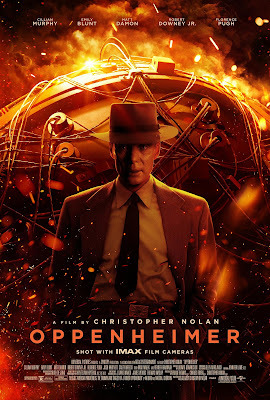
There’s no question that Oppenheimeris not as colorful as its “Barbenheimer” mate. There’s simply no place inthis story of the so-called Father of the Atomic Bomb for the cheery pastelsand peppy musical numbers that help make Barbie such a crowd-pleaser. (Oppenheimer’ssoundtrack is loud, atonal, and jarring. And at key moments the film shifts awayfrom color cinematography into somber black-and-white.) It’s instructive to remember, though, that atsome point Barbie’s and Oppy’s stories overlap in time. The climacticcongressional hearing around which Christopher Nolan’s complicated film isstructured took place in 1959, the same year that Mattel’s Ruth Handler introducedher plastic fashion queen to little girls everywhere. What a mixed-up world welive in!
As a biographer myself, I’m aloyal member of Biographers International Organization. At annual BIOconferences we discuss the implications of biography, and compare techniquesfor conveying the essence of a life. BIO is where I’ve interacted with KaiBird, who with the late Martin J. Sherwin wrote the 2005 Oppenheimer biographythat became the main source for Christopher Nolan’s film. Their book ismassive. In its more than 750 pages it contains a huge amount of information,all of it dedicated to bringing to life a brilliant but highly tormentedindividual, one whose contributions to science and to the winning of World WarII were balanced by a deep-rooted sense of moral culpability. No wonder theirwork is called American Prometheus, reflecting (in a way the eruditeOppenheimer would surely have appreciated) the tortured Greek hero who stolefire from the gods and gave it to mankind.
After seeing Oppenheimer,I’ve been reflecting on the very different ways that biography and film servetheir subject. Though Oppenheimer crams many historical details into itsthree-hour running time, I found it hard to connect the vivid faces surroundingthe lead character with their role in his orbit. Which were good guys? Whichwere not? Any spies among them? The action moved much too quickly for me to besure. And there simply wasn’t time to fill in the family details that a readerof biography craves. Like: how was Oppy raised? What was the source of thefamily wealth? What exactly did his brother mean to him? And. also, what becameof Oppenheimer after the events the film uncovers? What about hischildren, following a mysterious scene in which Oppy seems to be giving away hishysterically crying little boy to someone better suited to parenthood? Nolan’swork has certainly aroused my curiosity, and I suspect it will drive plenty ofnew readers to American Prometheus.
By the same token, film canfar outdo a prose biography when it comes to giving us an emotional jolt. Thehigh point of Nolan’s work is of course the Trinity Test, the simultaneouslyexhilarating and terrifying moment when Oppenheimer and his team witness thesuccessful detonation of an atom bomb in the New Mexico desert. It’s a momentwhen Nolan pulls out all the stops with every cinematic trick at his disposal,using both sight and sound to bring us the blast that led Oppenheimer to mutterwords he himself had translated from the Bhagavad Gita: “Now I am become Death,the destroyer of worlds.” Nolan also relies on bursts of unexpected surrealismwhen handling Oppy’s extra-marital dalliance with Jean Tatlock, injectingnudity in a very surprising way. And I’ll not soon forget the lead performanceof Cillian Murphy, who’s charged with holding together the portrayal of a mansimultaneously otherworldly and all too down to earth.
August 11, 2023
Seeing Red: Hollywood’s Paranoia Years
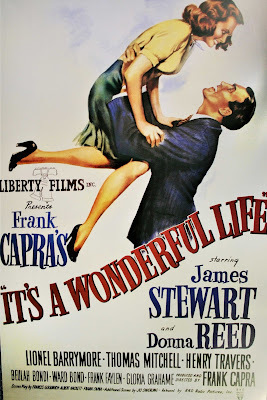
Was the Christmas perennial, It’sa Wonderful Life, covert Marxist propaganda? What about a 1945 tearjerkercalled Pride of the Marines, regarding a U.S. Marine who loses hiseyesight at Guadalcanal? Or a 1948 fantasy-drama called The Boy with GreenHair?
We think of the bad old days—whenAmerican politicians were spotting Communists on every corner—as the McCarthy Era.That described the early 1950s, when a certain senator from Wisconsin wasaccusing most of the U.S. State Department (not to mention the honchos of theTruman administration) of being under the thumb of Soviet Russia. In Hollywood,though, the Red Scare began earlier, just a few years after the end of WorldWar II. When the USSR shifted, in the public’s perception, from being one of the Allies defeating NaziGermany to a dangerous enemy out to undermine the American system, the movieindustry was quick to try removing from its midst anyone who’d once had theslightest admiration for Karl Marx or for Soviet ideology.
L.A.’s Skirball CulturalCenter is currently playing host to a traveling exhibit called Blacklist:The Hollywood Red Scare. The exhibit’s focus is on writers and others wholost their livelihoods (and sometimes their lives) when their patriotism wasquestioned by studio bosses. In that era, it became verboten to belong(or to have belonged, even decades earlier) to the American Communistparty. And guilt by association was the rule, not the exception. Woe to theHollywood figure called before a Senate committee to answer the question, “Areyou now or have you ever been a member of the Communist Party?” (You wereexpected to get yourself off the hook by ratting out your friends.) Anunverified mention in a publication called Red Channels could destroyyour career, though a quiet pay-off to the editor could help your problem vanish.
Jews, Blacks, and members ofother minority groups were, in that era, particularly suspect. Philip Loeb, whoplayed Gertrude Berg’s husband on a popular radio broadcast called TheGoldbergs, was accused of Communist sympathies in Red Channels.Though he denied the accusation, it led to his firing and then to his suicide.Popular leading man John Garfield, whose wife had once been a Party member, washounded into an early death. Some major Hollywood stars, led by Lauren Bacalland spouse Humphrey Bogart, rallied to form a Committee for the First Amendmentin support of their fellow actors, but studio bosses quickly scared them off.
Perhaps hardest hit wereHollywood’s veteran screenwriters, who found themselves living overseas and writingunder fake names, only collecting the Oscars they’d earned (like DaltonTrumbo’s for Roman Holiday) decades later. For me the most eye-openingpart of the exhibit was the display of FBI commentary casting suspicion on theera’s most popular films. It’s a Wonderful Life? It was suspect becauseit contained ““a rather obvious attempt to discredit bankers.” The Best Years of Our Lives? Thispoignant 1946 drama of 3 servicemen trying to re-adjust to civilian life,winner of 9 Oscars including Best Picture, was regarded with disfavor forportraying the upper class unattractively. Because Gentleman’s Agreement, a Best Picture winner that boldly confrontedanti-Semitism, included in its cast of characters a bigoted cop, it was accusedby the FBI of being “a deliberate attempt to discredit law enforcement.” Bodyand Soul? “It portrays the rich and successful man in a bad light and thefinest character of them all is a colored fighter.”
And The Boy With GreenHair? Who says that looking different is a GOOD thing?
Beverly in Movieland
- Beverly Gray's profile
- 10 followers



